Honda and Sport UTVs: A Historical Guide

A lot of riders think the notion of a UTV or side-by-side with factory performance is a new concept; one derived from the natural process of realizing that early Mules and Rhinos could be designed less for work and more for recreational ripping. Not so! Honda realized years and years ago that ATVing had a lot in common with the type of fun being had by dune buggy enthusiasts, sand rails and go-karters.
Odyssey Gen One
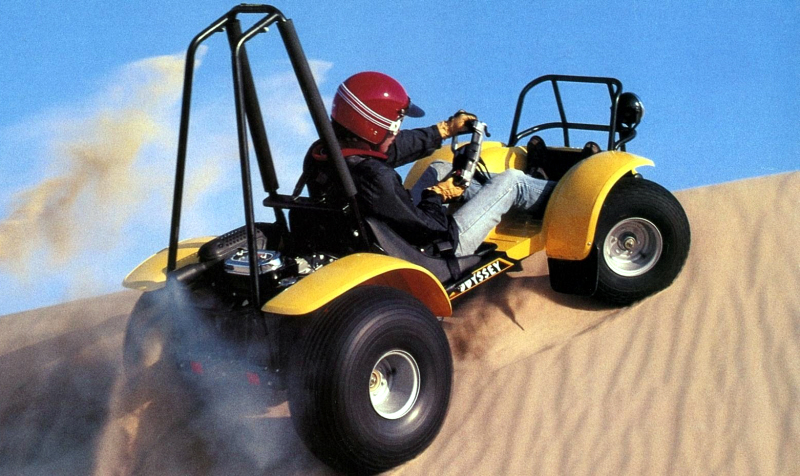
As far back as 1976, they began putting into production a machine called the Odyssey (which would hit dealers in the US as a 1977 model). The Odyssey had a design style that sort of combined the fender flares of the dune buggies of the era but putting the power to the dirt was certainly an engine package that sport UTV fans of today might consider a little, uh, anemic. But do keep in mind that the 248cc powering this automatic 2wd buggy was a 2-stoke. Honda kept things simple as in air-cooling, pull-start, drum front brakes (mechanical disc in the rear) and believe it or not, while it did have 4″ of front suspension, the rear was rigid. While we never rode one, we’re going to go out on a limb and guess that it didn’t like whoops or jumps. And by “it” we mean the operator’s lower lumbar.
Odyssey Gen Two
Things remained pretty unchanged for the Odyssey for the next 8-years (though it did get the now-famous dune buggy inspired roll cage in 1982) and then the second generation Odyssey arrived in 1985. This one really narrowed the gap between a unique ATV of the 80s and what we consider a sport UTV today.
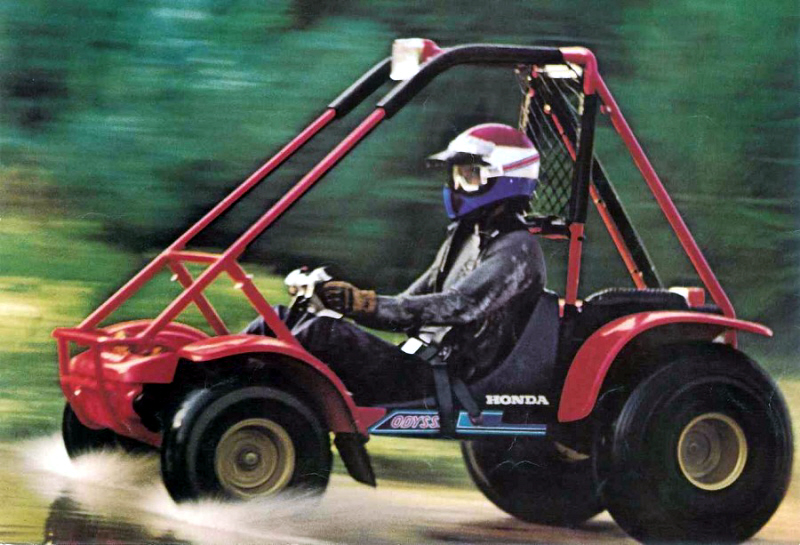
In addition to gaining some much-needed rear suspension (independent, no less), the second generation Odyssey added perks we still hold dear like electric starting, reverse and a larger engine; this time a 342cc 2-stroke.
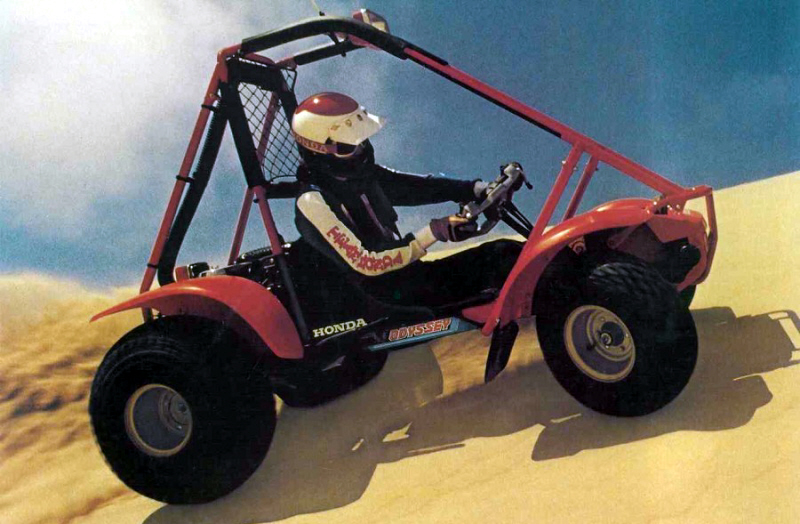
Thankfully the mechanical drums and disc brakes were replaced with dual hydraulic drums in front and a single hydraulic rear disc. Its stance was also widened and its suspension travel increased.
Gen Three: Pilot
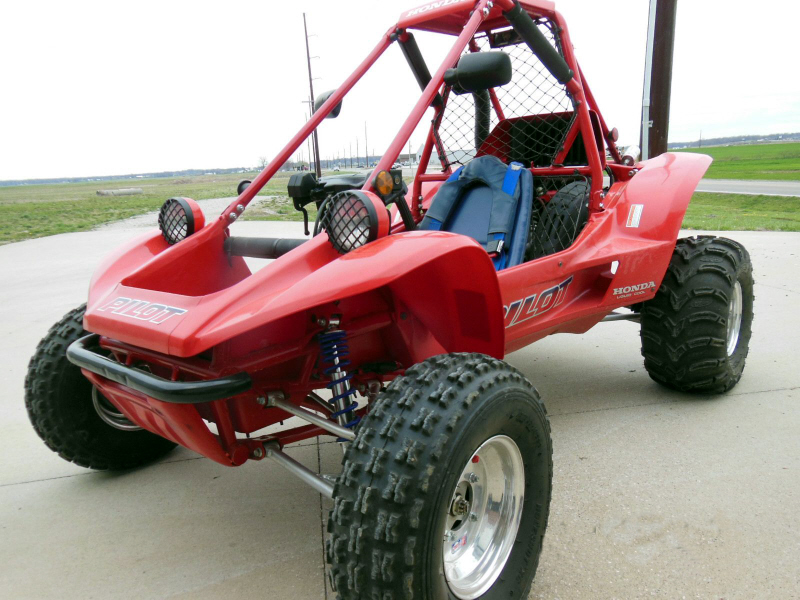
Four years after the second generation Odyssey, Honda once again revamped the platform, this time deciding to give it a new name. Enter the 1989 Honda Pilot (FL400R), a machine that would become known as the last of its style until the advent of the modern side-by-side.
Powered by an electric-start, 397cc liquid-cooled single-cylinder 2-stroke with a belt-type, fully automatic, continuously variable transmission (with reverse), this one even boasted a four-point safety harness, back up pull starter and a 59.4″ width.
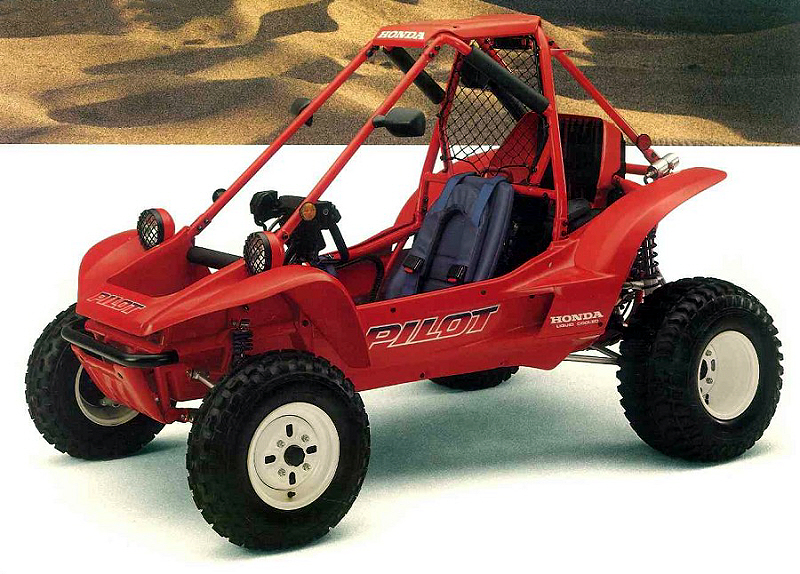
Sadly the Honda Pilot was only around for 1989 and 1990.
Conclusions and Comparisons
While 1990 marked the end of Honda’s 13-year experiment in combining dune-buggy style seating and stance with ATVing, there is no denying that the influence of these machines lives on in each and every sport UTV manufactured and sold today.
A few of the trends did die off with the Odyssey/ Pilot, however, such as the rear-mounted motor, front drum brakes, 2WD only drivetrains and of course the 2-stroke engines themselves.
The closest machine manufactured today to the Odyssey/ Pilot’s sensibilities comes not from Honda but rather from Polaris in the form of the Sportsman Ace single-seater.
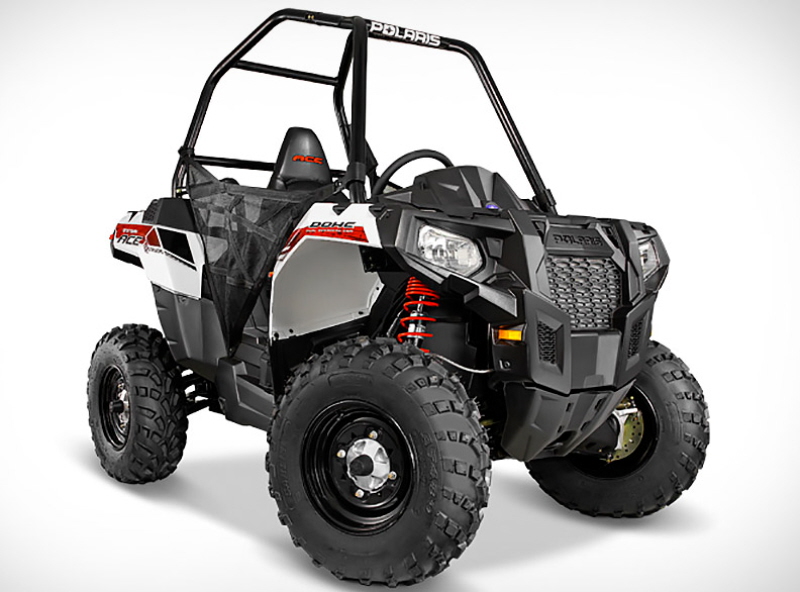
Finally, making information on these two elusive machines even harder to track down is the fact that Honda used both the Odyssey and Pilot monikers in naming vehicles on their automotive line (a minivan and crossover respectively). For ATV riders, however, the name Honda Odyssey and Honda Pilot will forever conjure up images of some of the earliest dedicated sport UTVs on the planet.
